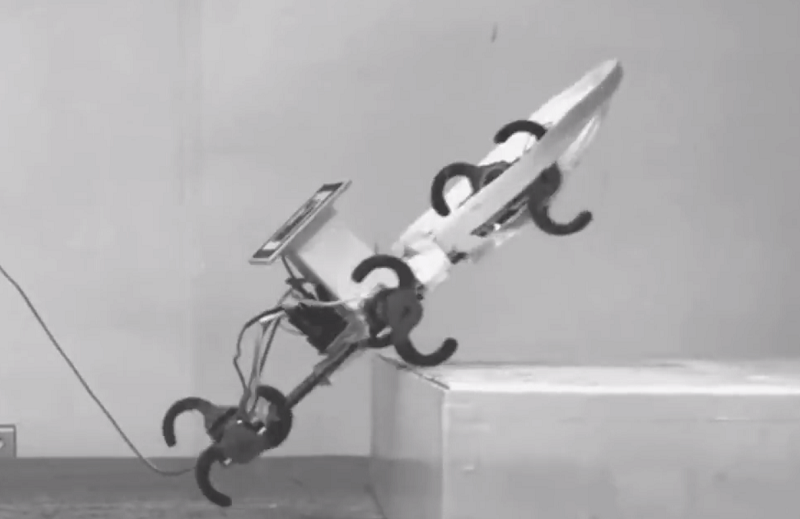
Smooth gaits and graceful movements seen in nature could help robots navigate terrain without falling over. Johns Hopkins University researchers studied videos of cockroaches running to help their insect-like bot find its way.
Sean W. Gart is the lead researcher on two papers produced with work done in the Terradynamics Lab. They filmed cockroaches with high-speed cameras as the bugs navigated an obstacle course of gaps and bumps. When they watched the videos back they examined how the cockroaches moved their legs to get out of tight spots and through bumpy terrain.
“We are just beginning to understand how these critters move through a cluttered 3-D terrain where you have obstacles that are larger than or comparable to the animal or robot’s size,” said Chen Li, senior author of the papers, director of the Terradynamics Lab, and an assistant professor of mechanical engineering at Johns Hopkins.
The robot they’re working on is an open-loop six-legged machine. Specifically, they tested how well it could cross gaps the length of its own body and scale obstacles up to three times its own height. They found that applying cockroach behavior to the robot increased the length of gaps it could traverse by 50 percent. The cockroaches speed up and pitch their body in a certain way in order to cross long gaps.
Likewise, watching how the cockroach angled itself toward obstacles up to four times its hip height enabled the researchers to teach the robot to climb higher bumps by a factor of 75 percent.
“We’re trying to understand the principles of how they go through such a complex terrain, and we hope to then transfer those principles to advanced robots,” Li said.
Along with changing the robot’s behavior, they also added a tail so that the robot was shaped and balanced more like the animal.
Small robots could be used to transport components or fly unseen, as long as they can plan as well as an insect’s brain does.

